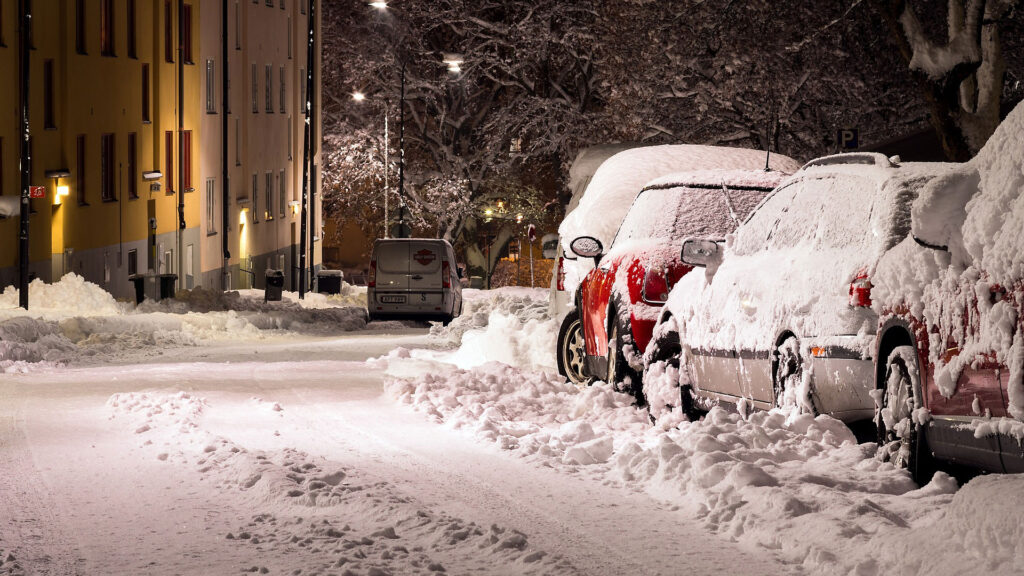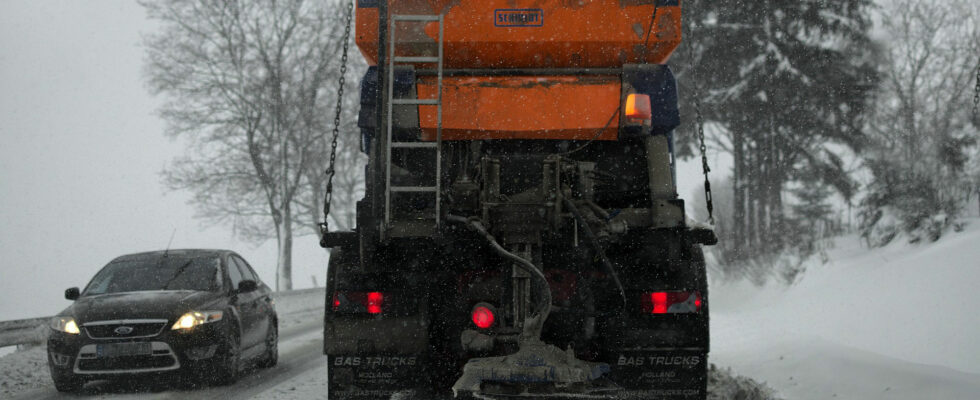A few centimeters of snow are often enough to block traffic in regions unaccustomed to this weather. However, there is equipment and some good reflexes to limit these chaotic situations on the roads.
The Mountain Law requires motorists to have pneumatic equipment adapted to snowy periods, when driving in mountainous areas defined by decree. However, the years follow one another and are similar: once again it is motorists from Ile-de-France and Normandy, not affected by this obligation, who find themselves blocked on the roads by a few centimeters of snow this January 9, 2024. ” More than 1,000 vehicles were blocked at the start of the night, and 400 vehicles were still blocked at 8 a.m. this morning on certain roads », indicated Clément Beaune, Minister of Transport, live on BFMTV.
Shouldn’t we extend this pneumatic equipment to all regions where winter episodes (cold, rain and/or snow) appear more and more regularly, creating chaos on the roads?
The absence of road salting is not the only cause
In Île-de-France, the lack of preventive and curative salting is said to have largely contributed to the chaos on the Ile-de-France highways, leaving motorists stranded in their cars for many hours.
The Minister of Transport Clément Beaune indicated on X in the night that ” all the snow plows from the Roads Department are mobilized », i.e. more than sixty vehicles to cover the entire region. This is ultimately quite little, compared to the number of roads to be covered to ensure minimum traffic conditions.
The problem in this case is partly due to a lack of anticipation. The minister clarified in an interview with BFM that the snowy episode was not anticipated by Météo-France. However, a yellow alert was issued at the start of the evening. Once traffic is blocked by snow, quickly transformed into ice with the passage of vehicles, and with accidents (more than a hundred according to the minister), snow removal machines are no longer able to pass through to take action.
Motorists themselves are partly responsible for this situation. The absence of tires suitable for winter (“all-season” or “winter” tires) in these regions and often inappropriate driving/speed in poor road conditions generally precipitates chaos on the affected roads. Usually it only takes one rainy episode to notice drivers’ bad habits; snow only amplifies the phenomenon.

Suitable tires provide safety for all users
Even without living or traveling to the areas affected by the Mountain Law obligation, “all-season” tires, or those more specific to the winter period, are a real safety element that should not be neglected.
Dominique Stempfel, president of the tire union, has already had the opportunity to remind us of this: “ We must reassure those who have chosen to equip themselves with winter or all-season tires, they have done well, the ultimate sanction being an accident with significant material damage and even serious bodily injury. On a dry road surface, below +7° at 50 km/h, to stop, a summer tire needs 4 meters more than a winter tire, this is the width of a pedestrian crossing, and on a snow-covered roadway, it is more than 30 meters, the length of 6 or 7 cars or 2 semi-trailers. »


Faced with icy roads, like on the A13 motorway last night, winter tires alone would not be enough to avoid disappointments.
Tires are the only physical elements that connect you to the road, they deserve special attention. So, even without the obligation to adopt tires suitable for winter, find out how to equip yourself and drive safely.
Receive a regular dose of information on mobility, and more specifically on electric cars, by subscribing to our Watt Else newsletter:
Subscribe for free to Artificielles, our newsletter on AI, designed by AIs, verified by Numerama!
